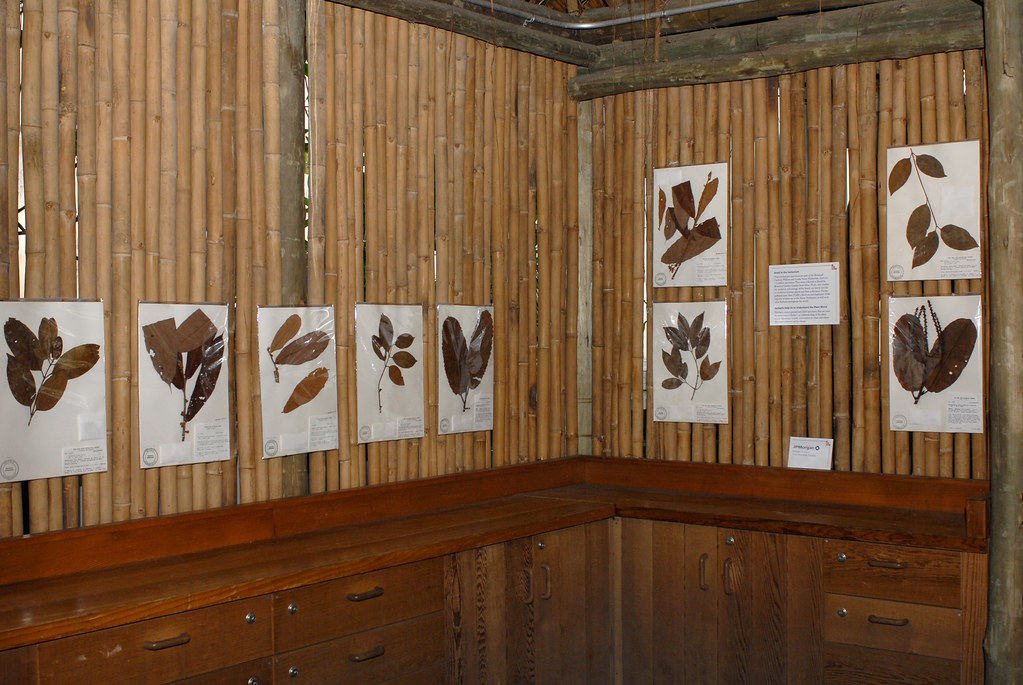Teaching Herbarium Provides Hands-On Study
Posted in Learning Experiences, Science on April 9 2009, by Plant Talk
 |
Nieve Shere is Information and Collections Manager for The New York Botanical Garden’s Institute of Economic Botany. |
 As the Information and Collections manager for the Institute of Economic Botany (IEB), I manage ethnobotanical data and collections, coordinate the work of volunteers, and curate the Teaching Herbarium of Economic Plants, a valuable tool for education and botanical science.
As the Information and Collections manager for the Institute of Economic Botany (IEB), I manage ethnobotanical data and collections, coordinate the work of volunteers, and curate the Teaching Herbarium of Economic Plants, a valuable tool for education and botanical science.
The Teaching Herbarium comprises specimens that have economic value—for instance, those that are used in a commercial industry such as food production—and that are preserved in a way that allow for hands-on study. In fact, the Teaching Herbarium is used to train students in botanical identification as well as in the development of the Botanical Garden’s educational curricula and scientific exhibitions.
The Herbarium’s first specimens, in the early 1980s, were collected by Garden scientists Michael Balick, Ph.D., and Hans Beck, Ph.D., shortly after the creation of the IEB; later collections included those by Garden scientist Scott Mori, Ph.D., and longtime volunteer Dick Rauh, Ph.D. The majority of the teaching specimens are from the Arts Resources for Teachers and Students (ARTs) project, the first project initiated by IEB to develop the Teaching Herbarium.
Through the ARTs project, middle and elementary school kids on the Lower East Side surveyed plants sold in the Chinese and Hispanic markets. The students collected vegetables such as bok choy, cabbage, and taro and pressed, dried, and mounted the specimens. The specimens documented the historic and commercial data specifically about the diversity of foods sold in New York City markets. These collections, along with the specimens collected by the above-mentioned scientists, were instrumental in the development of the early Economic Botany courses that Dr. Balick taught at Yale University and at Columbia University’s CERC program.
Over the years the collection has continued to grow into a rich repository of plants used commercially such as for food, construction, and medicine. It now houses more than 600 specimens made up of 200 species from 113 different families. Dedicated volunteers reorganize and repair damaged specimens and update the database, making the collection even more user-friendly. The IEB is fortunate to have had for more than 25 years the dedication of Dr. Rauh, who has carefully assisted in the curation of this collection with the help of volunteers Connie Papoulas, Margaret Comsky, Ermgaard Clinger, Gwen Dexter, and Daniel Kulakowski.
Specimens from Dr. Mori’s Brazilian teaching collection are currently on display in the Enid A. Haupt Conservatory (pictured) as part of The Orchid Show: Brazilian Modern. Additional specimens from the Teaching Herbarium will be featured and new plant material provided for visitors to make their own specimens during the Herbarium Specimen-Making Workshops to be held in the Library building each day from April 9 to 19, beginning at 2 p.m.
If you would like to get involved with the Teaching Herbarium, please contact Volunteer Services at 718.817.8564 or volunteer@nybg.org.

